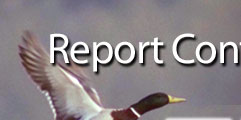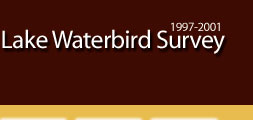 |
 |
 |
||||||||||||
 |
 |
 |
 |
 |
 |
 |
 |
|||||||
|
Preface • Introduction • Study Objectives • Community Participation • Regional, Physical and Ecological Setting Methods • Survey Protocol • Surveyors • Data Compilation • Data Analysis Results • Migration Chronology • Breeding Species • GSL Species Accounts • Species Distribution Discussion • Recommendations • Acknowledgements • Definitions/Abbreviations • Literature Cited Report & Appendices: 1 • 2 • 3 • 4 • 5 • 6 • 7 • 8 21-Year Waterbird Survey Synopsis & Appendices: 1B • 2B • 4B • 5B • 6B • 8B
|
Breeding SpeciesThis study did not directly assess the breeding status of waterbirds within the boundaries of the study area. However, counts did include breeding waterbird species as they occurred within each survey site. From this data set it is possible to assess potential breeding adults through the assumption that adults observed at known breeding periods are potential breeders. For this report, breeding period is defined as the period of time that encompasses pair bonding, nest building, and egg laying. These conditions can vary within and between species at the GSL. A conservative assessment was made to determine potential breeding adults by examining the five-year survey period means at a time when the species was present within the defined breeding period. For example, the optimum breeding period for American avocets was judged to fall between May 21 and July 10. At this time, the highest five-year survey period mean was greater than 63,000 potential breeding adults (Appendix 5). The survey period distribution of these 63,000 potential breeding avocets is displayed in Appendix 6. The projected breeding period was determined to be during survey periods 5-10 for this species. Similar examinations can be made for the most common, if not all potential breeding species at the GSL by examining the potential breeding data (Table 7) and comparing them to the Species Distribution by Survey Period (Appendix 6).
Table 7. Potential breeding population estimates of some waterbird species at GSL.
Go to Previous Section (Migration Chronology) • Go to Next Section (GSL Species Accounts)... |